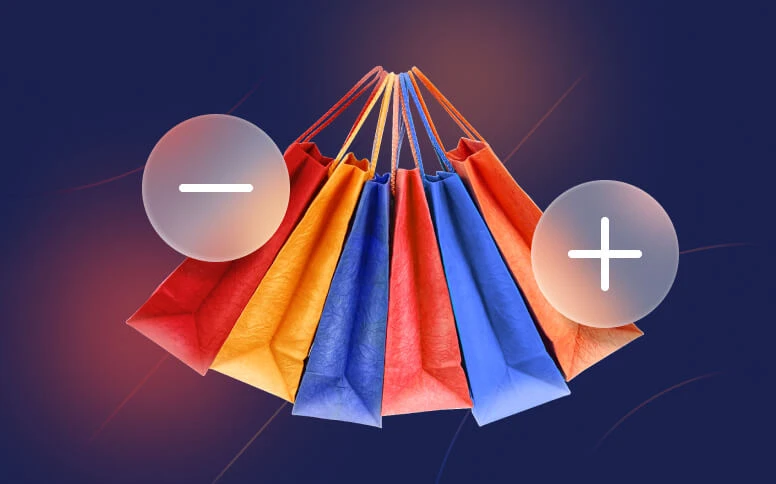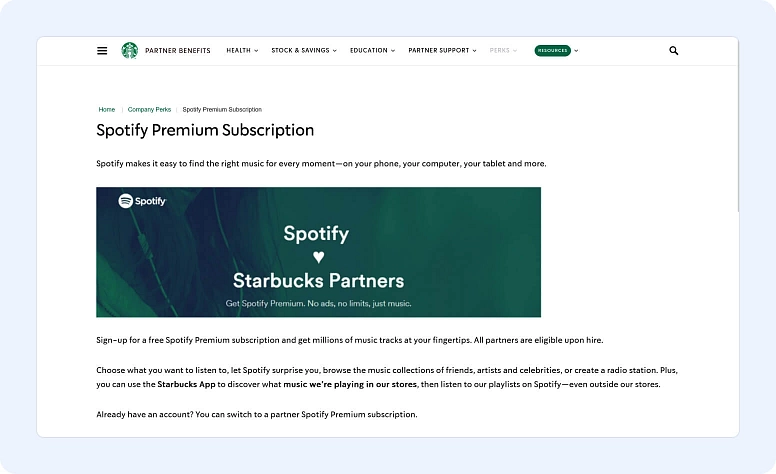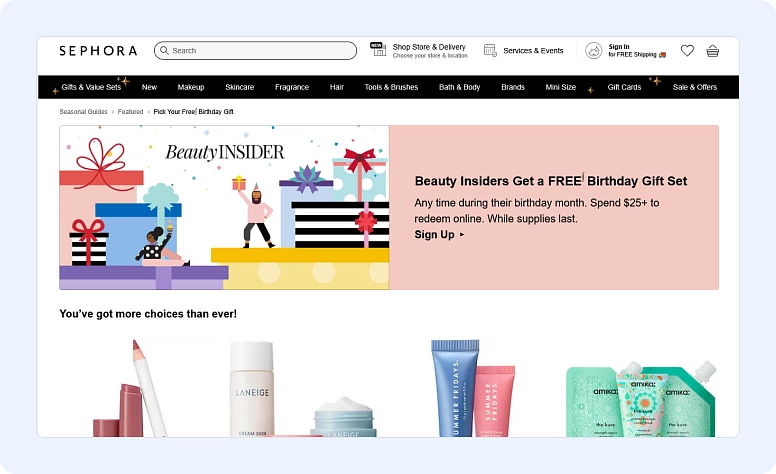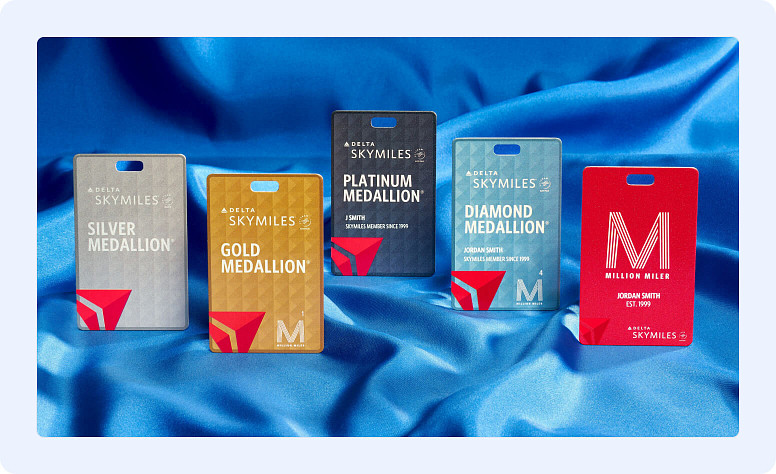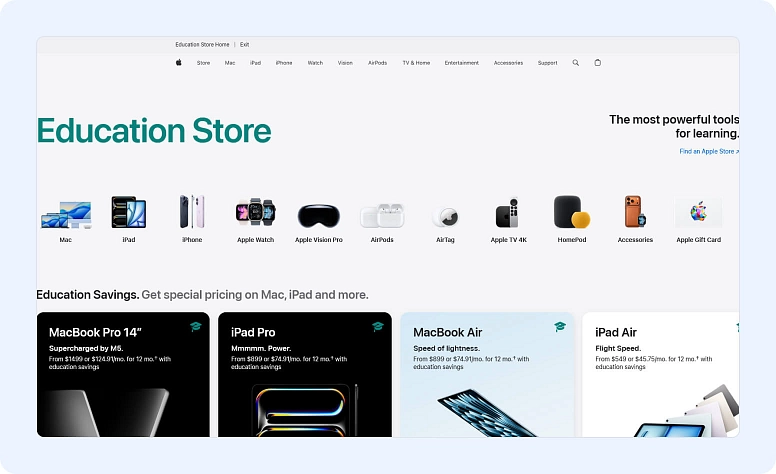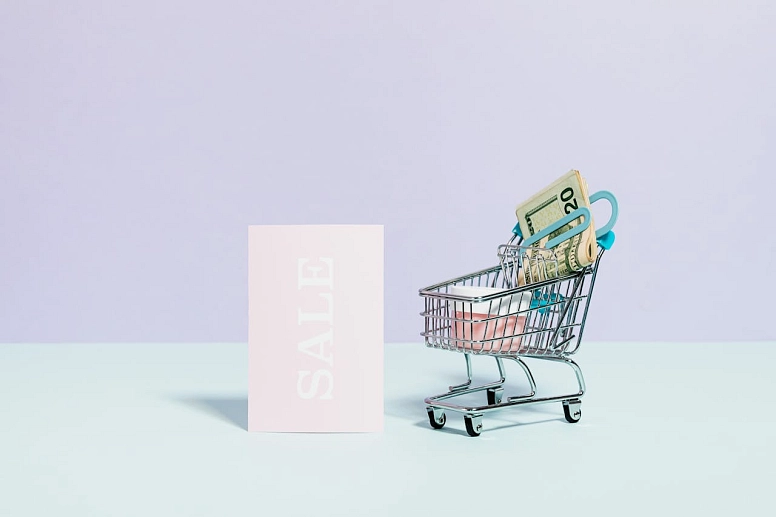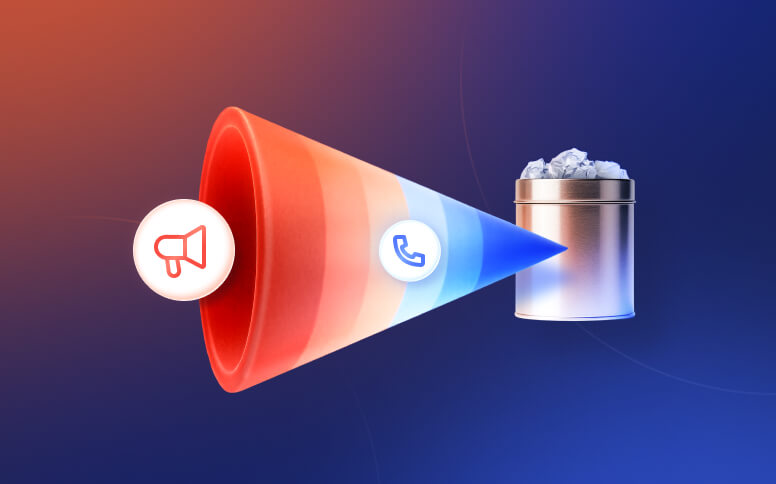Promotional Pricing: Benefits, Drawbacks, and the Risks Behind Discounts
- What Is Promotional Pricing?
- Common Promotional Discount Types
- Why Companies Run Discounts and Promotions
- Risks of Using Discounts
- Which Promotional Pricing Strategy Works Best?
- Should Your Business Offer Discounts?
- When Promotional Pricing Makes Sense
- When Promotional Pricing Backfires
- Customer Opinions: Pros and Cons of Discounts
- Before You Run Your Next Promotion
Some business owners bake the discount into the price long before the product hits the shelf. Others won’t touch their pricing at all, even when every competitor is running seasonal sales. And then there’s the “we’ll-figure-it-out-later” group that throws in a discount whenever things look slow.
So which approach actually works? And when does a discount help more than it hurts? Before we get into tactics and examples, let’s take a moment to define what promotional pricing actually is and where it fits in the broader promotional pricing strategy.
What Is Promotional Pricing?
Promotional pricing is a short-term price reduction (often part of limited-time promotions) used to increase interest, attract new customers, or boost sales during a specific period or campaign. It usually appears as a percentage discount, a fixed-price offer, a bundled deal, or a limited-time promotion tied to an event or season.
It is important to say that promotional pricing is temporary by design. The goal is to remove friction at the right moment, not to permanently lower the value of the product. In most cases, the discounted price still stays above cosе, but there are exceptions, like clearing out old inventory or running a closing sale.
Common Promotional Discount Types
Marketers usually distinguish several types of discounts:
Bulk / Wholesale Discounts
The price changes based on order volume. Most large companies now offer two prices — one for retail and one for wholesale buyers. The reason is simple: bigger orders reduce packaging, shipping, and per-unit handling costs.
Seasonal Discounts
These discounts follow the classic idea of buying winter gear in summer and summer items in winter. Most shoppers know that off-season prices for winter clothing, summer sports equipment, and certain electronics are lower.
It’s not profitable for a store to keep unsold items in storage all year. That’s why you can find inexpensive ice skates at the end of winter or discounted fans closer to September.
Holiday Discounts
Black Friday & Cyber Monday, Christmas & New Year Sales, Labor Day Sales, Valentine’s Day — all of these increase customer spending. People look for gifts for family and friends, and discounts have become a standard part of holiday shopping.
It also makes sense for sellers to consider themed holidays. For example, a stationery store runs a Back-to-School sale, while a fitness brand might run promotions for New Year’s “fresh start” season.
Partner Discounts
A company can offer a discount provided through its corporate partners. For instance, after buying something from an online children’s clothing store, a customer might receive promo codes by email: a free trial class at a local kids’ gym, half-price tickets to an indoor trampoline park, or a discount on tutoring services.
Personalized Discounts
A discount given to a single person or a specific group. The most common example is a birthday discount. Another case: a bank offers a lower mortgage or loan rate for a bank’s payroll clients.
Loyalty or Tier-Based Discounts
A loyalty system for returning customers, where the discount depends on the total spending or average order value. Retail stores use loyalty cards; online shops show a personal discount in the user profile. Service businesses often use status levels, for example, airlines offering benefits to Gold or Platinum members.
Welcome or First-Time Customer Discounts
Especially useful for services that people use repeatedly. A first-order discount helps attract new customers. Examples: $1 delivery after signing up; 50% off your first haircuts; a free month of streaming for new subscribers. If someone tries a service for free or at a low cost, they’re more likely to continue using it at the regular price later on.
Other Discounts
There are also discount types that don’t fit neatly into a category. Stores may reduce the price of items nearing their expiration date, or run promotions tied to the launch of a new product.
The choice of discount system depends on the business, the target audience, and the competition. In the next section, we’ll look at when discounts make sense — and when they don’t.
Why Companies Run Discounts and Promotions
The main reason almost every business runs different types of discounts is simple: customers expect them. Many shoppers hesitate to pay full price, and research shows that it’s not just the size of the discount that matters — the way it’s presented makes a difference.
In an experimental study (Büyükdağ, Soysal & Kitapci, 2020), researchers compared four discount formats: a fixed price, a 40% discount, a straightforward price drop (“from $500 to $300”), and a combined discount (“20% + 25%”). The results showed:
- A clear price reduction (“from $500 to $300”) is seen as the most attractive and increases purchase intention the most.
- Combined discounts (“20% + 25%”) also perform better than a single percentage.
- A standard percentage discount (such as 40%) is less convincing, even if the number looks bigger.
- For women, the discount format matters more and they respond better to specific, easy-to-understand offers. Men notice these differences less.
We can make a conclusion that customers react better to discounts they can easily evaluate — a final price they can see or a simple double reduction. These formats make the offer feel clearer and encourage more purchases.
Because of this, companies build marketing activities around discounts to avoid losing their audience. Promotions and price reductions are especially common in online retail, where it only takes a few seconds to compare prices across stores.
Some businesses also use penetration pricing for launches, which is a different strategy from short-term promotions. We break that down in a separate guide.
Before lowering prices, it’s important to understand why the discount is needed and how it fits into your overall promotional pricing strategy. The main benefits of promotional pricing usually include:
- Clearing slow-moving inventory: seasonal items, products close to expiration, or styles that are no longer in demand.
- Attracting new shoppers: especially when opening a store or launching a new product line.
- Increasing customer loyalty: targeted offers help bring existing customers back.
- Boosting engagement: reviews, sign-ups, referrals, or other actions in exchange for a temporary promotion.
- Helping hesitant customers make a decision: for example, offering a small discount to address a price objection during a sales conversation.
Clear communication matters here, and many businesses use simple estimates or proposals to avoid confusion about what’s included. If you need a quick way to send clean, professional estimates, Flowlu has a free Estimate Generator, no account required.
To understand whether a promotion will actually pay off, it helps to run a quick calculation before lowering the price. In simple terms, compare your current profit per unit with the profit after the discount, and estimate how many extra units you’d need to sell to break even.
For example, if a product brings in $40 profit at the regular price and only $28 with a discount, you’ll need to sell roughly 40% more units just to reach the same profit level. This small check prevents discounts that look appealing but quietly eat into your margins.
But even with solid reasons to run a promotion, the outcome isn’t always positive. A discount that’s too steep can make shoppers question product quality, and a big sale may bring in more visitors while the cost of running the promotion outweighs the benefit.
Risks of Using Discounts
Before you decide to run a promotion, you should understand the risks. Even when a discount looks harmless, it can create problems that aren’t obvious at first glance. For many businesses, discounts can do more harm than good if they’re used without a clear goal.
1. Lower perceived value
When a product or service is discounted too often, customers start to question its real worth. A marketing agency offering 40% off strategy work can unintentionally signal that the full price was inflated.
2. Attracting the wrong clients
Deep discounts tend to attract price-sensitive customers. For consultants, lawyers, accountants, and IT firms, this typically means short-term clients who disappear as soon as the promotion ends.
3. Margins drop faster than expected
Even a small discount can cut into your profit more than expected, especially for manufacturers with tight production costs or small businesses working with limited budgets.
4. Customers wait for the next sale
If discounts become predictable, clients simply delay purchases until the next promotion. This makes revenue less stable — a challenge for service businesses with calendars to manage and for manufacturers planning production.
5. Hard to raise prices back to normal
Once customers anchor to a discounted price, raising it later becomes difficult. This is especially risky for ongoing services like bookkeeping, consulting, or IT support.
6. Too many orders overload operations
A successful discount can bring in more work than the business can realistically handle. A bakery, print shop, or repair service might end up overloaded — with lower margins per job.
7. Damage to premium positioning
Professional services depend heavily on expertise and trust. If discounts appear too often, the offer starts to look less specialized and more commodity-like.
Which Promotional Pricing Strategy Works Best?
The right type of discount depends on the business and on what you’re trying to achieve. Here’s a quick way to match the goal with a practical discount format:
- For launching a new store or product: Use welcome or first-time customer discounts. They help people try something new with less hesitation.
- For retail and e-commerce: Seasonal discounts, clearance sales, and simple price drops work best. Customers understand them instantly, and they help move inventory.
- For service businesses (agencies, consultants, legal firms, accounting, IT): Packaged offers and bundled services tend to work better than deep discounts. You can add value without cutting into your margins.
- For manufacturers and wholesalers: Volume-based or tiered discounts make more sense. They reward larger orders without lowering the price for everyone.
- For subscription-based businesses: Loyalty perks, upgrade incentives, or time-limited offers usually bring better long-term results than big one-time discounts.
This simple mapping helps you choose a format that supports your goals instead of guessing or copying what competitors do.
Tools like Flowlu can help you track revenue, profit, repeat purchases, and customer activity so you can see whether the promotion actually worked.
Should Your Business Offer Discounts?
Whether a sale is helpful always depends on the business and the current market conditions. In general, almost any product can be sold at a discount, even at cost. Some companies go further and intentionally undercut the market, lowering prices so much that sales don’t cover operating expenses.
A well-known example is Uber. The company entered new markets with extremely low ride prices, sometimes lower than the cost of gas. This approach brought heavy criticism from drivers and pushed some of them to leave the platform. At the same time, it allowed Uber to push out many independent taxi drivers and small local ride-hailing services.
Let’s look at a few examples of promotional pricing that help and sometimes harm different types of businesses.
When Promotional Pricing Makes Sense
Let’s look at situations where running a sale is a reasonable decision.
1. Demand changes by day or season
A spa stays fully booked on weekends but sees low demand on weekdays. The owner lowers the hourly rate from Monday to Thursday to fill unused time slots.
2. Low average order value
A restaurant offers an appetizer for $1 when the check is above $30. The result is a higher average check because customers add more items to qualify.
3. Too much slow-moving inventory
Denim mini-skirts have gone out of style, but the store still has several boxes left. To clear space in the warehouse, the store launches a sale.
4. High customer churn in the industry
A jewelry store is losing long-term customers to a competitor with lower prices. The owner introduces a loyalty program, and shoppers return to purchase high-value pieces with a meaningful discount.
5. Higher volume increases profit
A sneaker store buys each pair for $20 and sells them for $60. In a typical month, the store sells 10 pairs, bringing in $600 in revenue and $400 in profit. The owner decides to offer a 20% discount, lowering the price to $48.
Thanks to the more attractive price, monthly sales increase to 15 pairs. As a result, revenue rises to $720 and profit increases to $420. Even though the price is lower, the higher sales volume leads to a better overall outcome for the business.
6. Supplier offers a performance bonus
A car dealership is an official distributor for a manufacturer. If it meets its sales target, the supplier provides a reward: a free vehicle, a share of revenue, or another bonus. To reach that target, the dealership gives customers a discount on certain models.
7. New store or brand needs visibility
A flower shop launches a grand-opening promotion: any bouquet is 50% off on the first day. This helps bring in new customers who haven’t heard of the shop before.
8. Customers don’t know the real price
A company selling sofas knows that people replace a couch only once every 5–10 years, so most shoppers aren’t familiar with current prices. Some retailers use this information gap to create fake discounts. A sofa that normally sells for $1,000 is given a new price tag: “Was $1,500 — now $1,000.” An inexperienced shopper sees a big discount, even though the higher price never existed.
Marketplaces use this promotional pricing tactic as well — a seller might list a $30 book with an “original price” of $300 to make the discount look more appealing.
9. Low customer loyalty
A fitness club uses Flowlu CRM to segment its audience and send a targeted offer to clients with children: a 30% discount on “parent + child” classes. The group, previously only one-third full, becomes fully booked — and customers appreciate the personalized offer.
When Promotional Pricing Backfires
Discounts can backfire in several situations:
1. Copying competitors without calculations
A small furniture maker creates handmade pieces. A large furniture manufacturer announces a 30% sale on all items. The small maker decides to match the discount, but misses a key detail. The manufacturer has a 60% markup, so the sale barely affects their margins. The small maker’s markup is only 30%. As a result, even though sales increased, profit dropped sharply.
2. Discounting luxury or premium goods
Many customers view a discounted luxury item as lower quality. A perfume shop sells original, high-end fragrances. The owner offers a 35% discount on several brands. Instead of increasing sales, shoppers assume the perfumes are counterfeit and go to competitors.
3. Attracting price-driven customers only
Ann offers permanent makeup services in the mid-price range. At launch, she ran a deep-discount promotion. She filled her schedule — but only with clients who were looking for the lowest price. Once the promotion ended, these customers left, and she still didn’t attract the clients she actually wanted.
4. Relying on discounts instead of sales skills
An event-planning agency creates great events, but the sales team struggles. To meet their targets, they rely on discounts. Without a discount, clients don’t book. The real solution would be training the sales team so they can handle price objections instead of lowering prices.
In cases like this, tools such as Flowlu help track conversion reasons and reveal whether the issue is really about pricing or about the sales process.
5. Discounts reduce profit too much
A store sells TVs that cost $500 each. In a typical month, it sells 5 units at $800, earning a $1,500 profit. With a 30% discount, the price drops to $560, and sales increase to 8 units. But the monthly profit falls from $1,500 to $480. The usefulness of discounts depends on financial results, long-term goals, and the company’s reputation.
Before moving on, it’s worth briefly looking at how you can tell whether a promotion actually worked. When measuring the success of promotional pricing, focus on a few simple indicators:
- Sales volume — did the number of units sold actually increase?
- Revenue — did total revenue grow or did the discount simply shift purchases around?
- Profit — did the promotion bring in more money after accounting for lower margins?
- Repeat purchases — did any of the new customers come back?
- Customer segments — which groups responded best to the offer?
Tools like Flowlu can help you keep deals, invoices, and customer segments organized so you can compare a promotional period to a regular one and see whether the discount improved your numbers or just added extra work.
Customer Opinions: Pros and Cons of Discounts
Now let’s look at sales from the customer’s point of view. Many people shop during promotions, but low prices don’t always work in the store’s favor.
Here are the pros and cons customers often mention:
| For | Against |
|
Shoppers can save on off-season items. For example, buying winter boots in early spring is a good deal — a typical end-of-season clearance. |
Customers are cautious about getting complex services at a discount. For example, a doctor or tutor offering extremely low prices may raise doubts — a case of devaluing the service. |
|
If an online store sells something cheaper than a local store, customers often mention it in reviews and note the discount — a source of positive feedback. |
Some shoppers believe discounts exist only to mislead them. If one store sells an item “on sale” for $1,000 and another sells the same item for $900 with no sale at all, customers question the point of paying more — a clear example of losing customer loyalty. |
|
When buying groceries, many people look for yellow sale tags. If the offer is attractive, they often pick up two items instead of one — raising the average check. |
Many people see discounts as a form of pressure. When a seller tries to push an item the customer doesn’t need, the discount feels unpleasant — an example of a failed marketing tactic. |
|
If a shopper buys the same product regularly, they look for a good price. When they find it, they tend to return to the same seller — an example of retaining repeat customers. |
If a customer gets used to always seeing a discount and then sees the full price, they may refuse to buy — an example of shoppers becoming dependent on sale prices. |
|
Customers appreciate knowing they got a genuinely good price. When the offer is fair and transparent, it builds trust and encourages repeat purchases — an example of strengthening the relationship with the seller. |
Discounts can reset the “true price” in the customer’s mind. If they anchor to the sale price, the full price starts feeling inflated — an example of long-term damage to perceived value. |
Before You Run Your Next Promotion
Before launching a promotion, decide why you need the discount. Is it to attract new customers? Clear unsold inventory? Increase the average order value? If the discount won’t bring in profit, there’s no reason to lower the value of your work or your products just because “everyone else is doing it.” This approach can easily shrink your margins without delivering real results.
Seasonal events like Black Friday or Back-to-School can be a good reason to run a promotion, but only if the discount supports your goals, not just because the date is on the calendar.
If you’re managing discounts regularly, tools like Flowlu can help you keep your customer data organized, segment your audience, and track deals and payments in one place. With everything structured, it becomes easier to see which promotions bring value and which ones are better to skip.
Promotional pricing means you make your product cheaper for a short time. It helps to bring more attention, get new customers, or sell faster. The price goes back to normal after the promotion ends.
You can check a few easy things:
- Did you sell more items than usual?
- Did you make more money in total?
- Did any new customers return again?
Flowlu can help you compare your sales and customers before and after the promotion, so you see the real result.
Yes. If you give discounts all the time, customers may think your product is not worth the full price. Some people will wait for the next discount and won’t buy without it. It’s better to use promotions only when you really have a reason.





